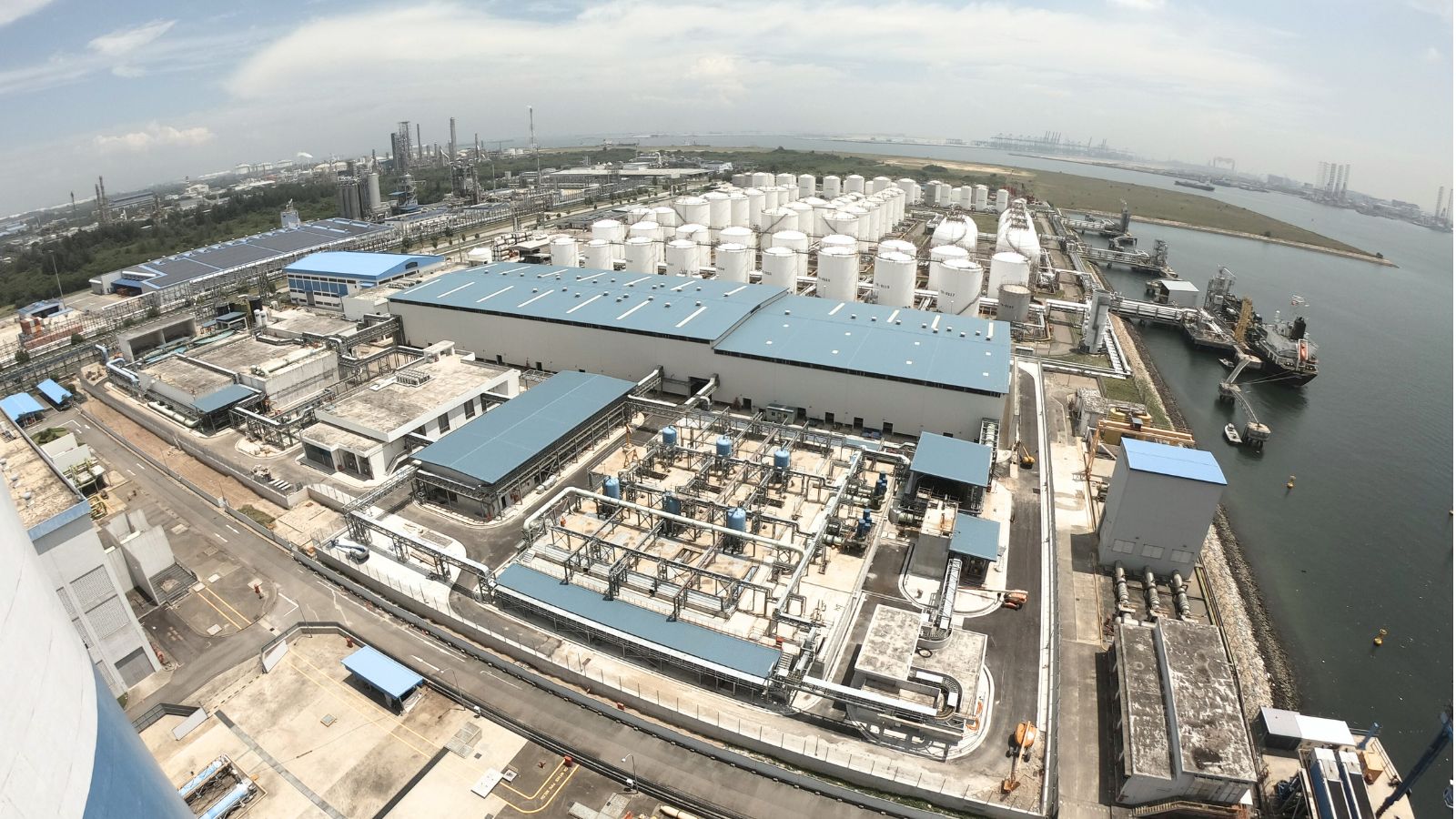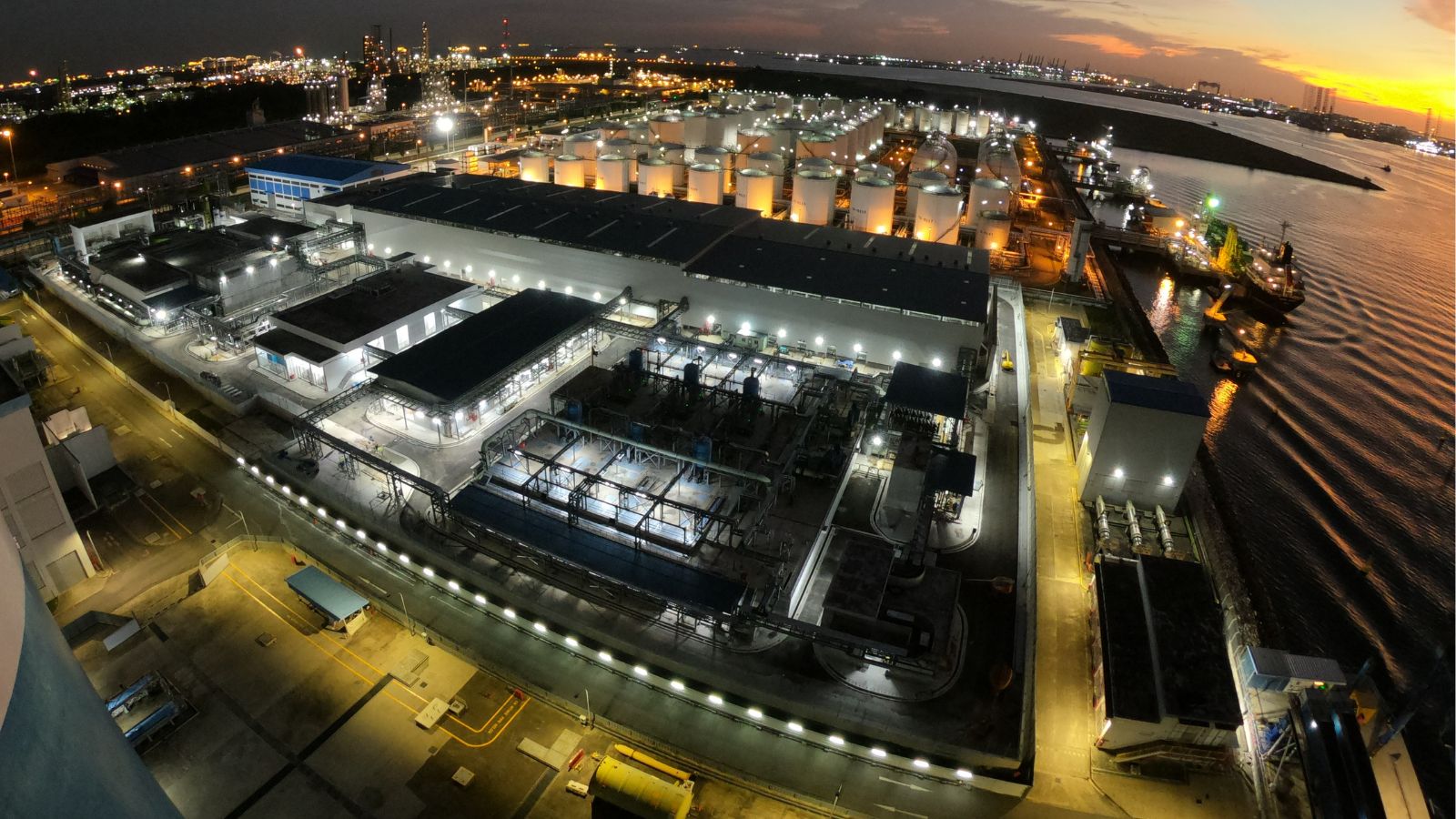Jurong Island Desalination Plant
Eco-Revolution: The Next Chapter of Singapore’s Water Security
The Jurong Island Desalination Plant (JIDP) is a testament to innovation, sustainability and digitalization in water treatment. It is no ordinary desalination plant. By design, its infrastructure and complex systems were custom-designed to support the mission: to become a sustainable and fully automated reverse osmosis (RO) desalination facility.
Terry Heng, JIDP’s Assistant Vice President of Water Services, outlines the technologies and design considerations behind this groundbreaking venture.
Not your ordinary desalination plant
In a typical RO plant, the predominant expenses for producing desalinated drinking water comes from energy and chemical consumption, in addition to operations and maintenance cost. However, being housed next door to Tuas Power’s Tembusu power plant, JIDP is able to capitalise on a host of strategic advantages.
Notably, it is able to draw on Tembusu’s effluent cooling water as feed water for desalination, eliminating the need to extract water from the sea using massive pumps. The feed water would have undergone screening and continuous chlorination to prevent debris and marine organisms from accessing and clogging downstream equipment and piping at the power plant. This eliminates the need for the same treatment at JIDP. The feed water would also have passed through the cooling condensers of Tembusu’s steam turbine, thereby raising its temperature and enhancing its permeability through JIDP’s RO system.
At the same time, the JIDP has been fitted with approximately 1.6 MWp of solar panels. With a minimum lifespan of 23 years, these panels can generate an average of 1,900 MWH of energy per year or 1% of the energy needs for JIDP at full capacity, equivalent to powering approximately 460 four-room HDB flats per year.
“A synergistic yet sustainable design is what we’re looking for,” says Terry Heng, Assistant Vice President of Water Services at JIDP. “By tapping into a renewable power source, and salvaging the treated effluent water that would otherwise have gone back into the sea, JIDP is able to lower its energy utilisation by about 5%. This aligns well with our broader objective of developing environmental engineering solutions that are smarter and more sustainable.”
Harmony in filtration: Elevating RO process optimisation
In terms of productivity and energy efficiency, JIDP boasts a sophisticated distributed control system (DCS) specially designed to optimise the multiple processes involved in RO desalination. Referred to as a plant-wide control system (PWCS) at JIDP, it effectively captures real-time data from sensors and analysers, seamlessly integrating this input with historic trends and specific methodologies to micro-control various operational indicators, including water pH and chemical dosage levels.
According to Heng, the design for the PWCS was developed from ground up. The intention was to build a system that incorporated the latest technologies to optimise crew strength, chemical and energy consumption.
“Thanks to the plant-wide control system (PWCS), we’ve been able to reduce chemical usage through accurate, just-in-time dosing. This allows for better control over bio growth and reduces the requirement for clean-in-place processes. In short, it reduces the amount of man-effort while lowering our energy consumption.”
Today, the PWCS has been extended to every facet of JIDP’s RO processes, effectively addressing concerns related to water quality, chemical dosing and machinery operations. By leveraging its adeptness in situational awareness and decision-making amid high complexity or uncertainty, the PWCS continues to play a pivotal role in JIDP’s aspiration towards fully automated operations.
Meeting Singapore’s daily consumption needs
At present, a three-man crew shoulders the responsibility of producing up to 137,000 cubic metres of potable water daily for Singapore’s daily consumption needs. Empowered by data trends derived from the PWCS, the crew is able to perform conditional based maintenance, eschewing the need for periodic or scheduled maintenance. Furthermore, the crew stands to benefit from the planned implementation of a process optimisation software that recommends the most effective utilisation of the RO systems for production needs.
“Working with seven high pressure sea water RO (SWRO) and four low pressure RO (LPRO) trains, our goal is to identify the most energy efficient combination of RO systems for the task at hand,” Heng adds.
The incorporation of sound sensors onto the high pressure pumps facilitates data collection for a prediction model. With repeated data pulling and verification against the baseline, the model’s ability to discern anomalies and predict failures would be enhanced, thereby elevating performance and outcomes while saving energy.
Precision in purity: Improving RO water quality
To safeguard the integrity of the RO membranes and prevent potential damage, the continuous monitoring of RO water conductivity is an essential process in desalination. JIDP has implemented an effective conductivity profiling process for this purpose. This significantly reduces the time taken for conductivity checks, given the number of RO vessels per train at JIDP.
Plans to install an automatic digitalised conductivity profiler had been put in place as part of continuous improvement and resource optimisation. By harnessing the analytical power of data, operational resources can be further freed up to focus on plant operations and optimisation, while ensuring the longevity and health of the RO membranes.
In summary, JIDP was engineered to uphold the principles of sustainability and digitalisation in desalination and water treatment. From its customised infrastructure to the implementation of cutting-edge technologies, JIDP exemplifies ST Engineering’s commitment to a smarter and greener future.


